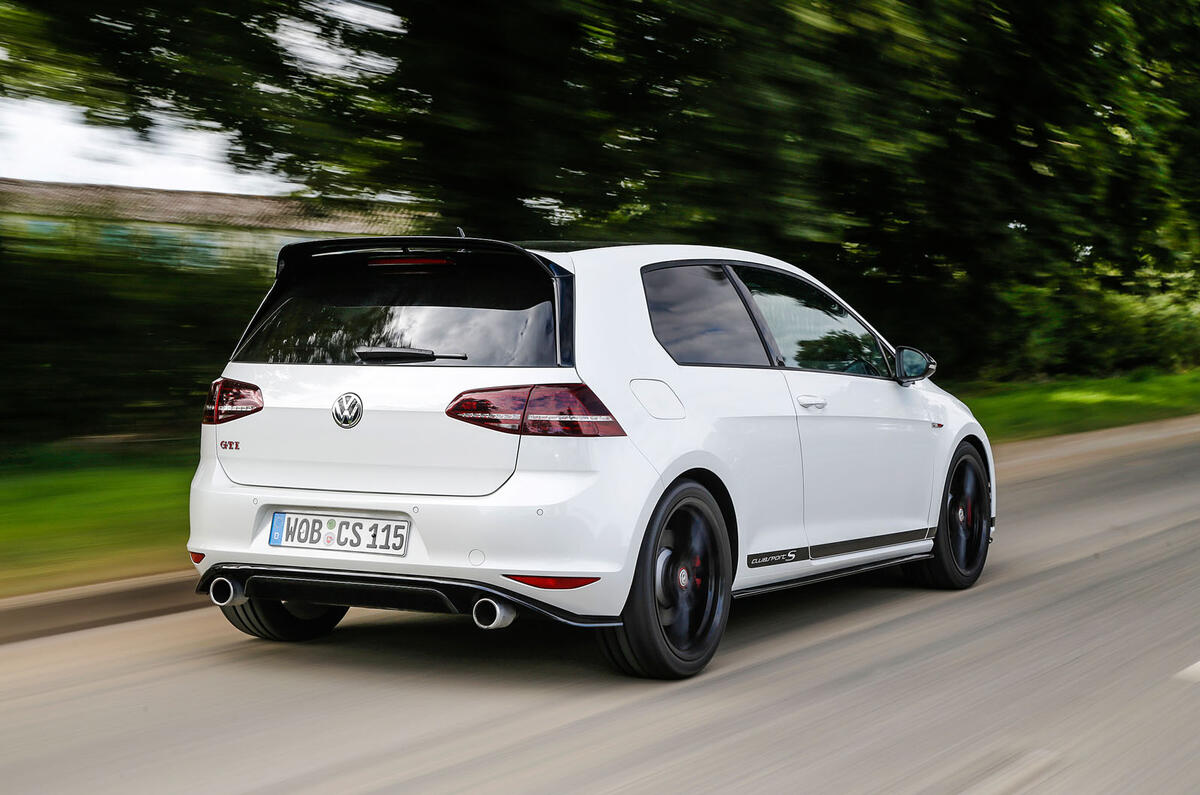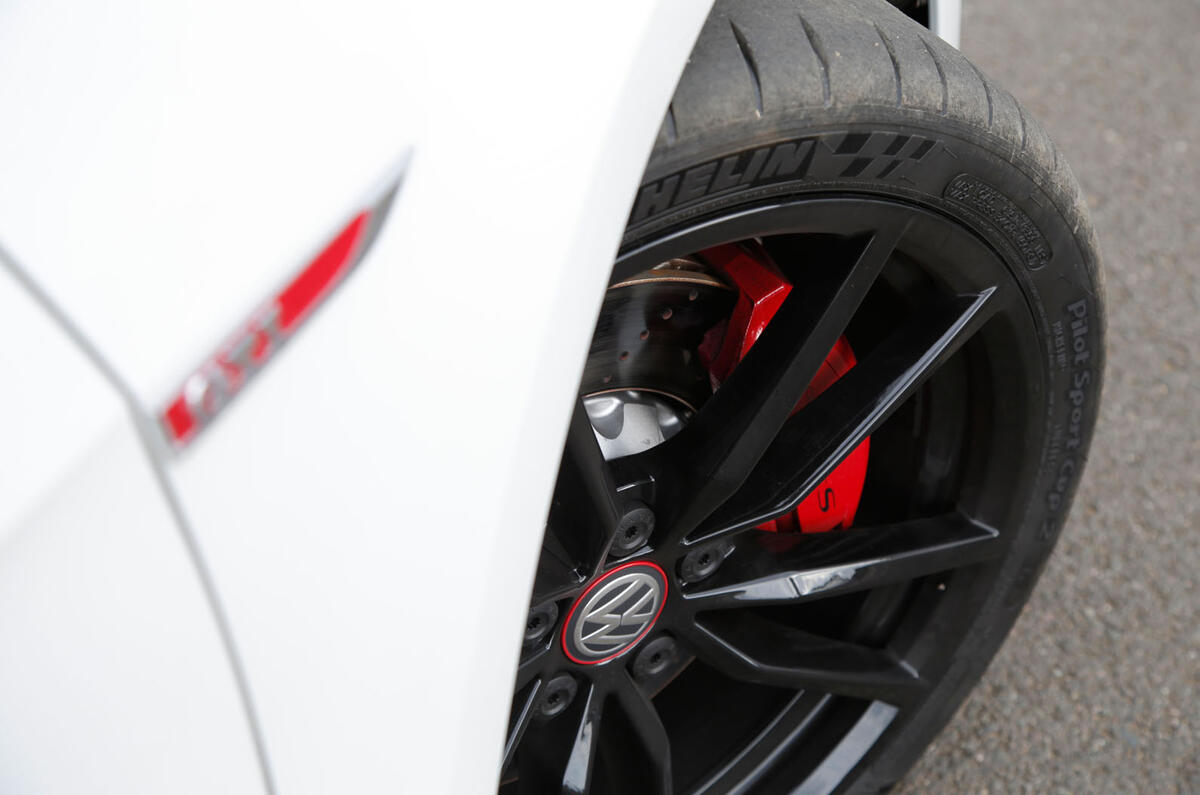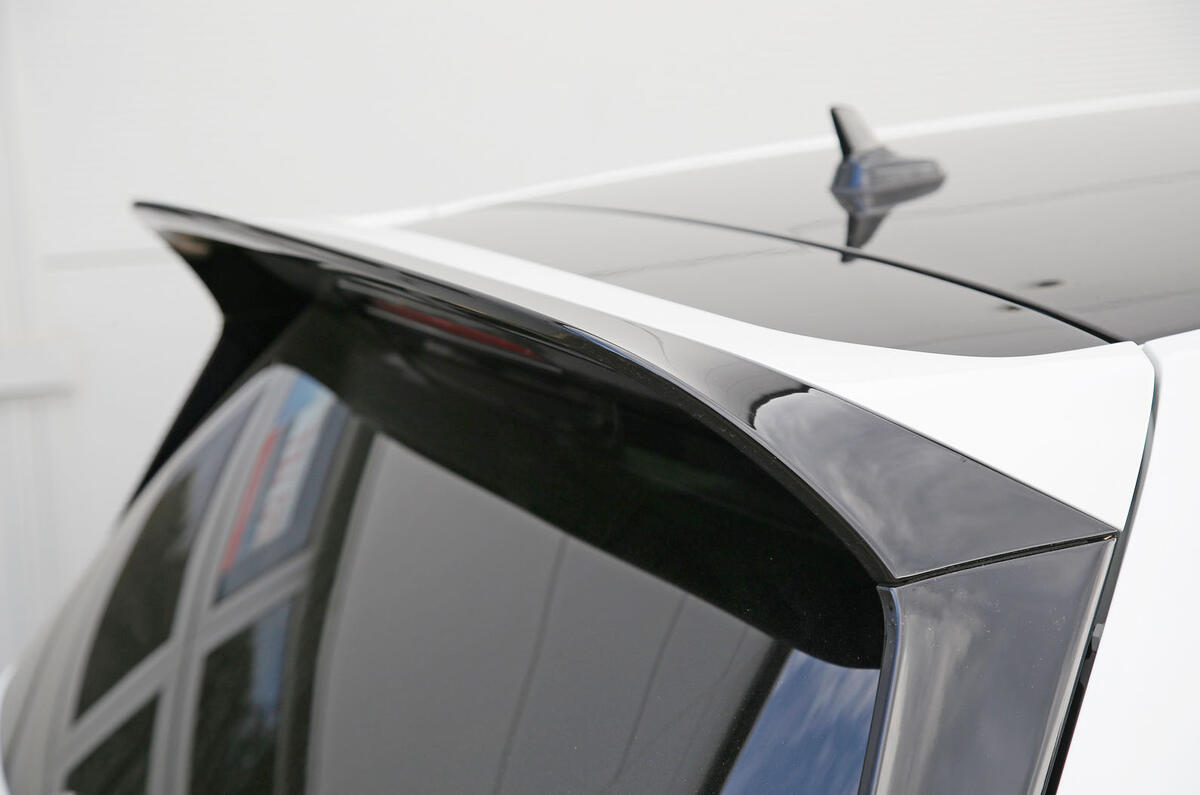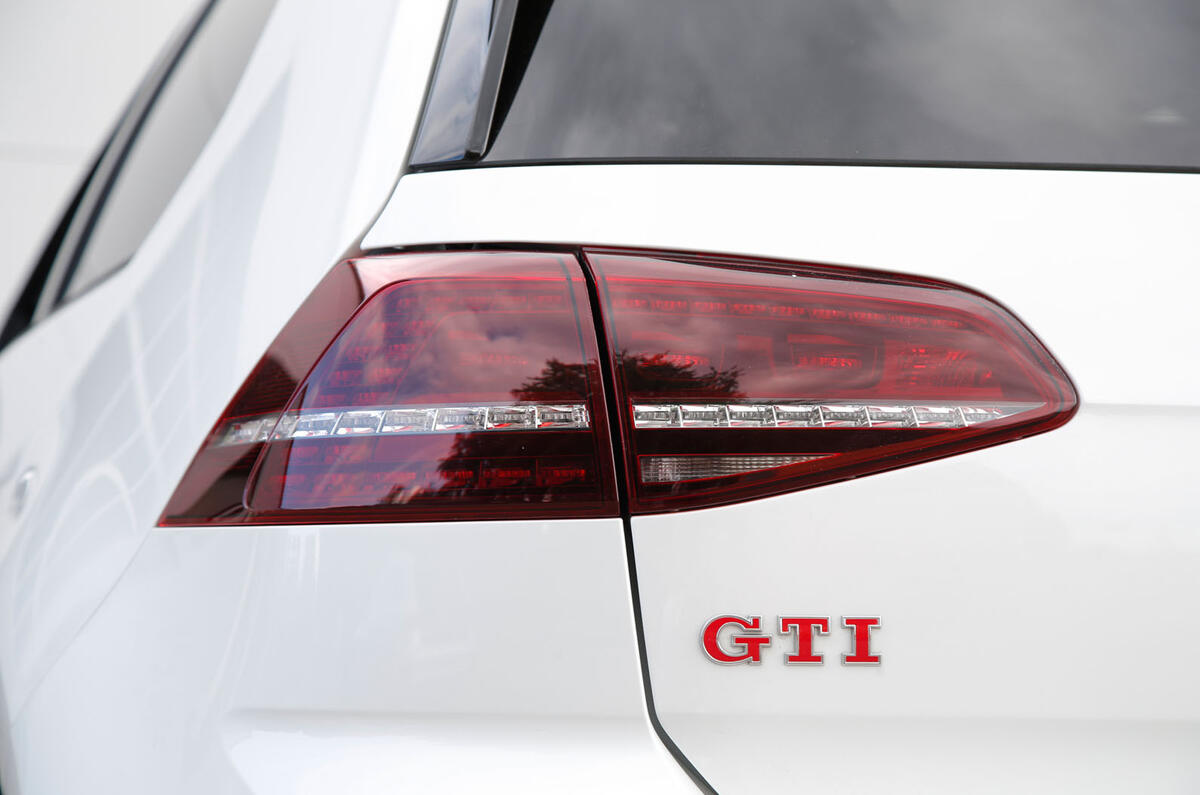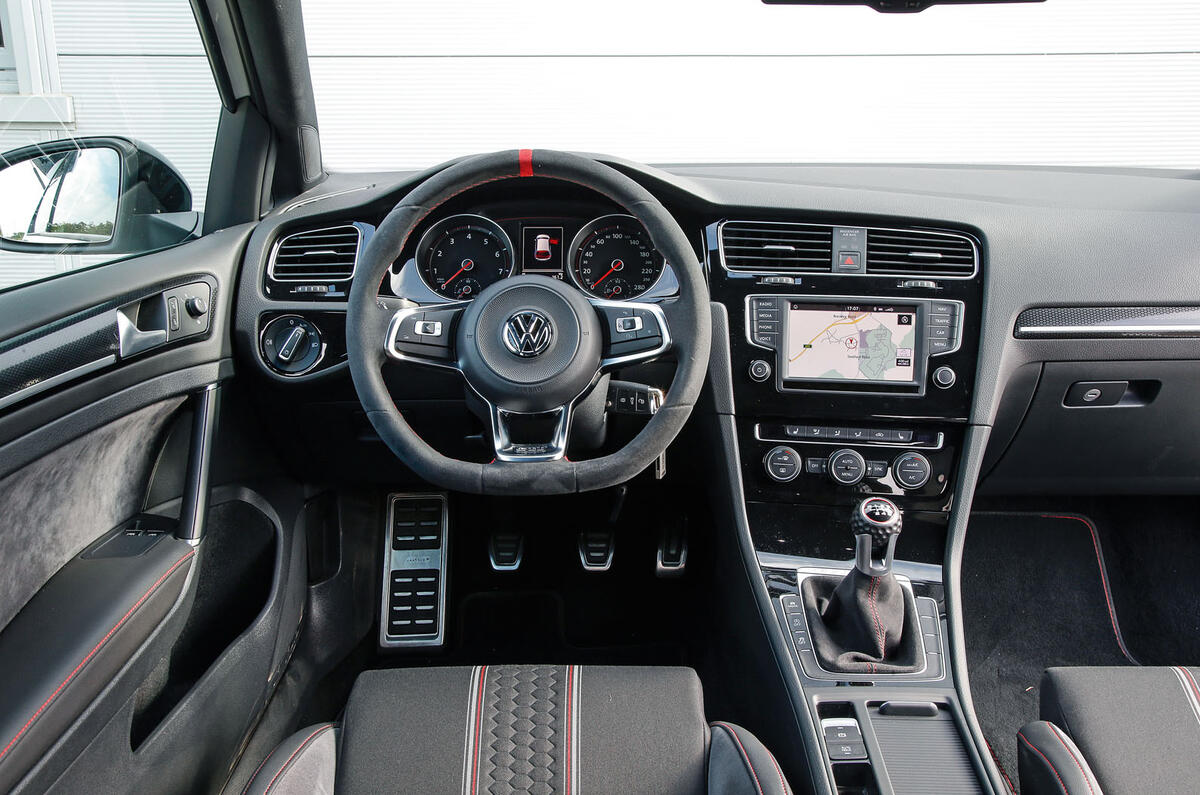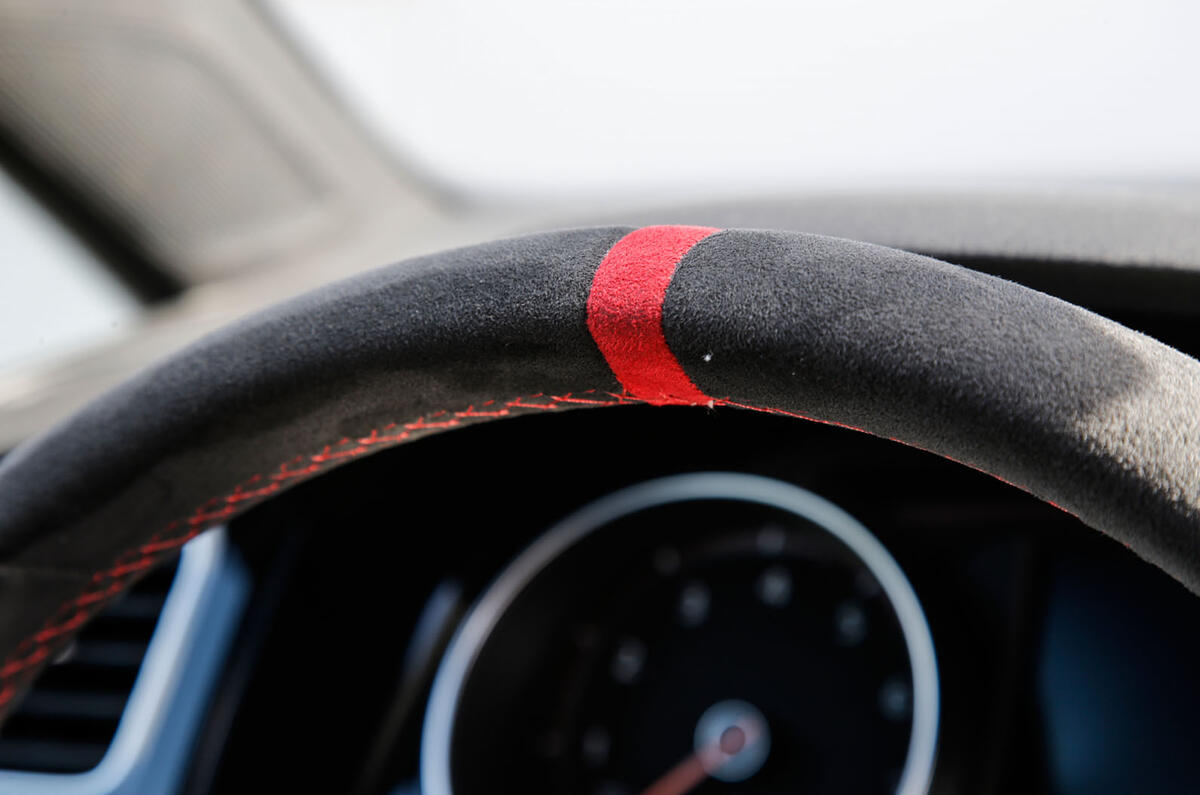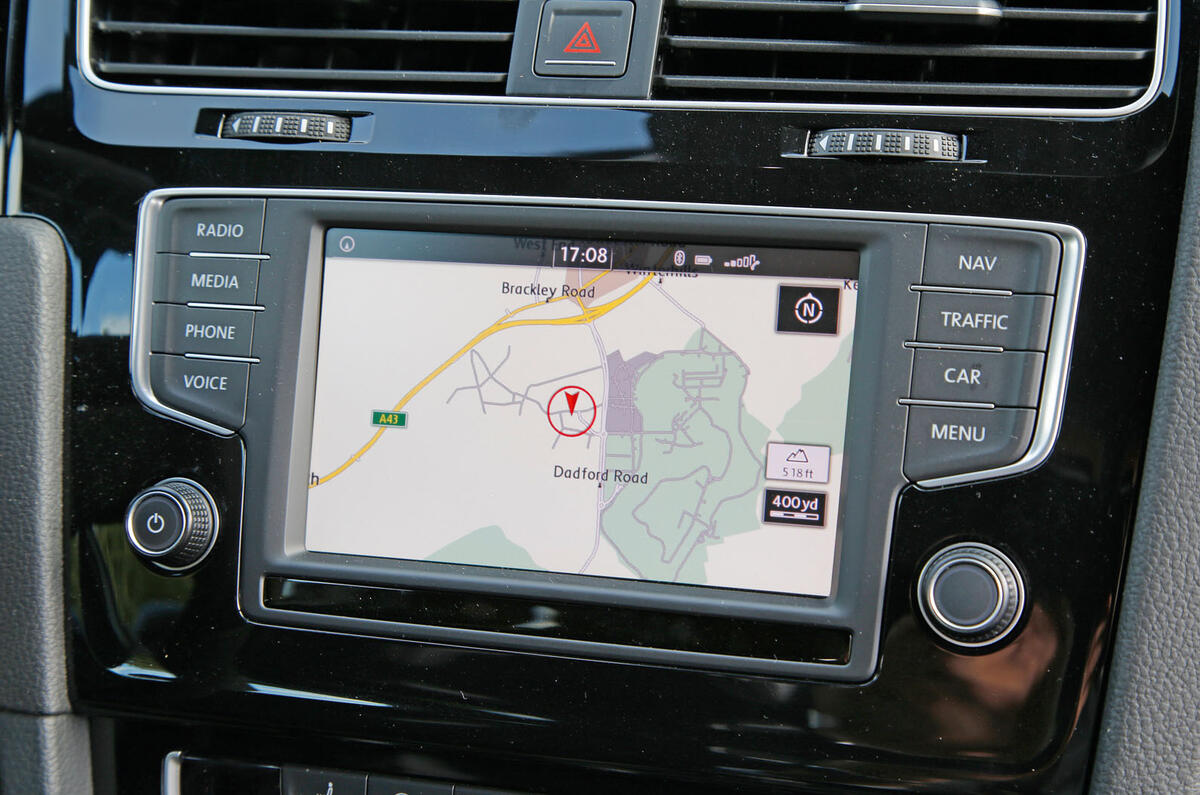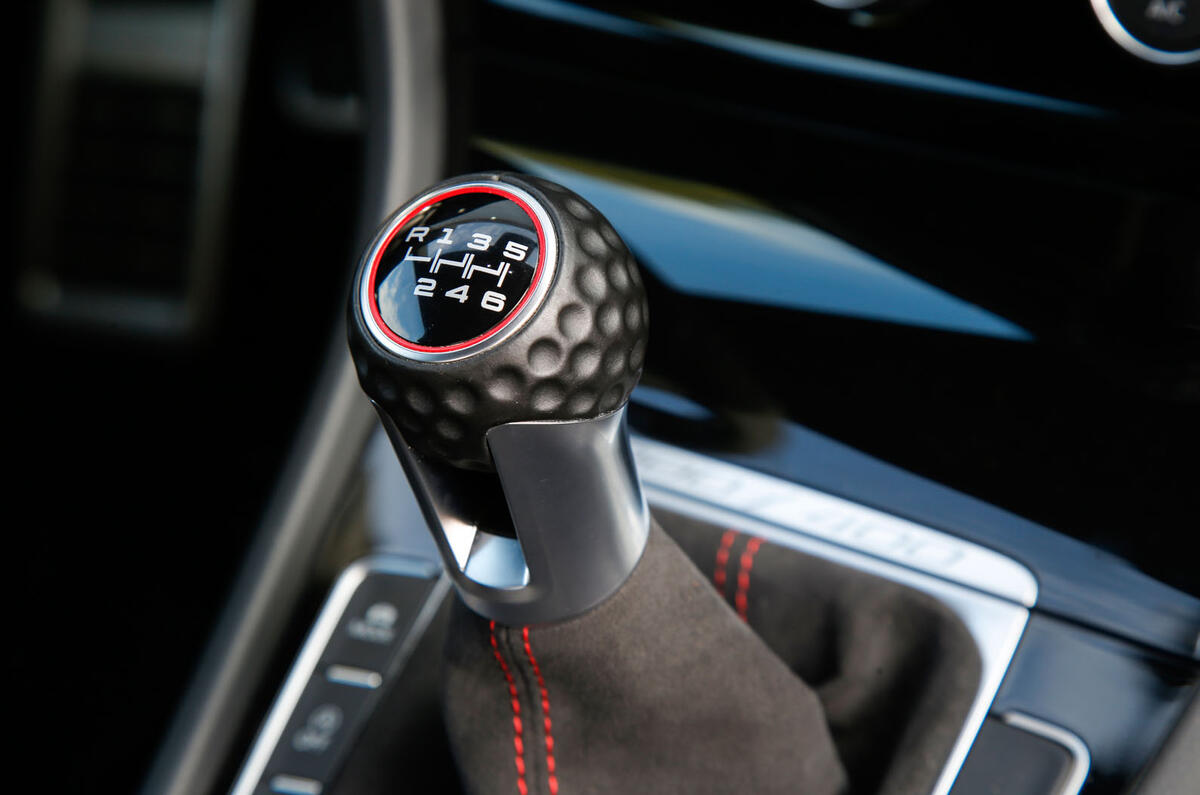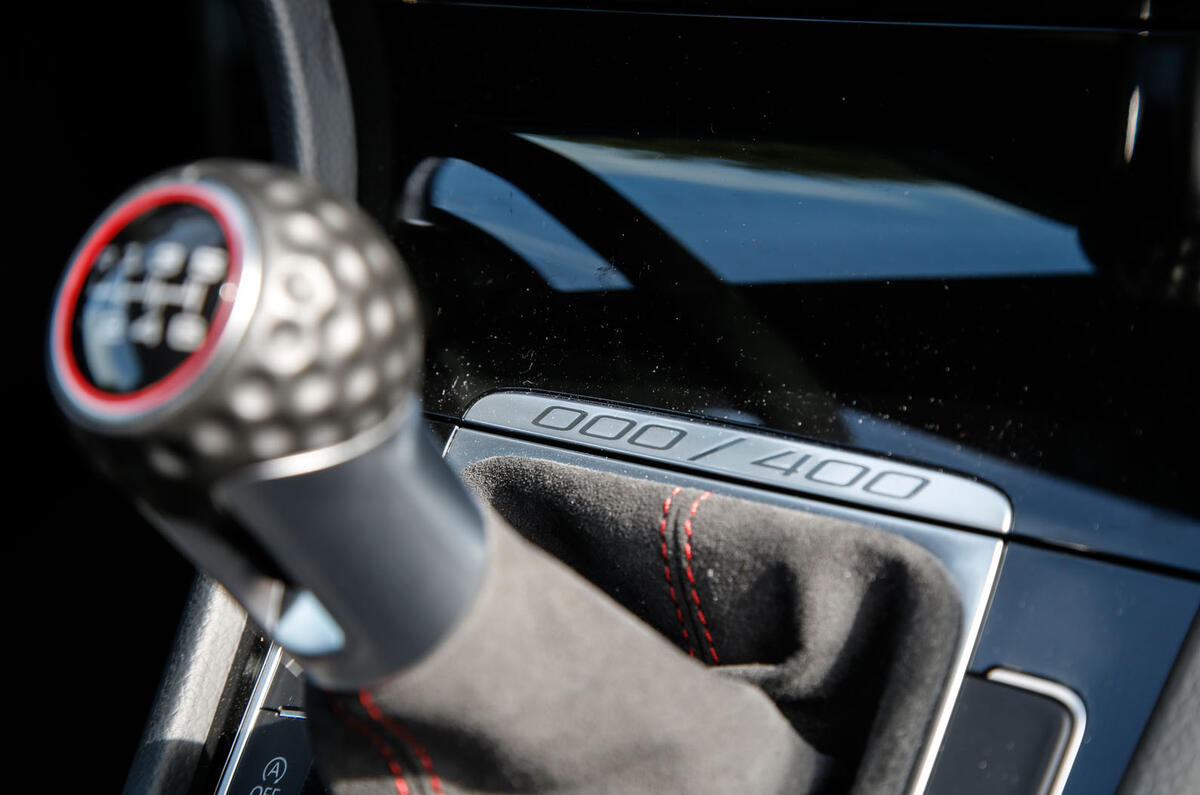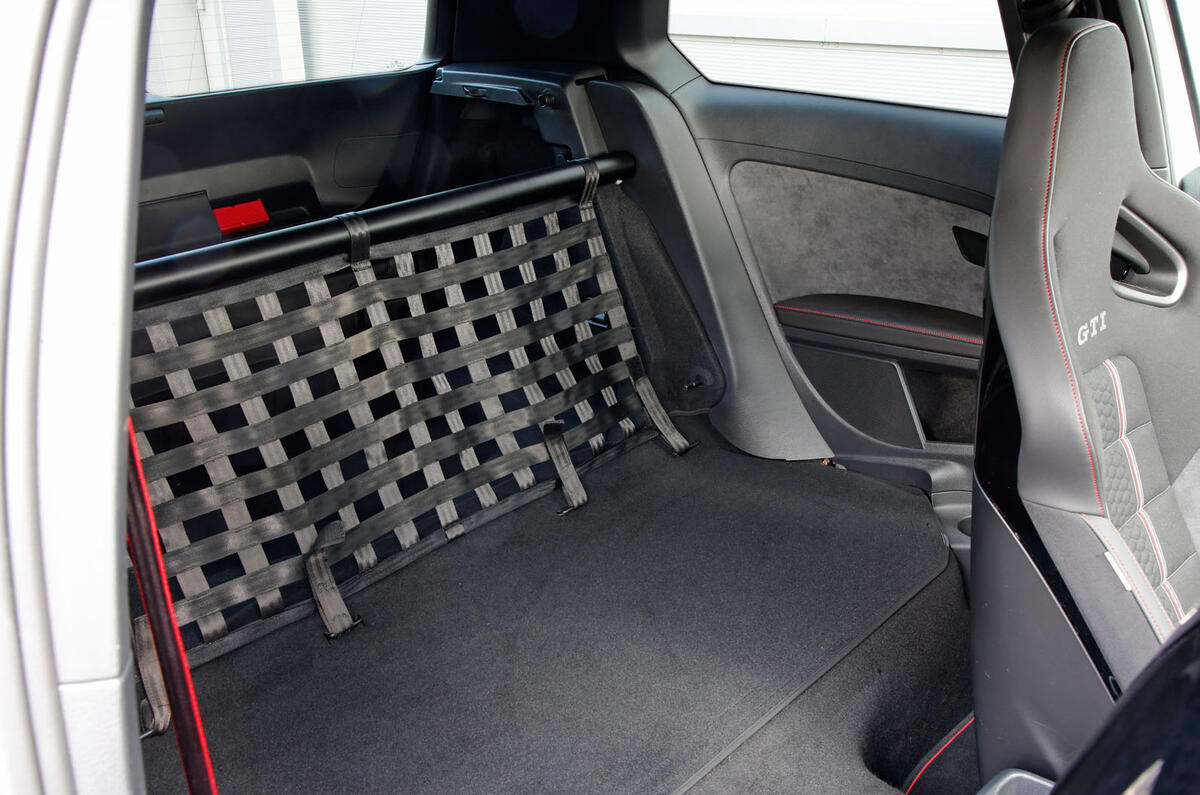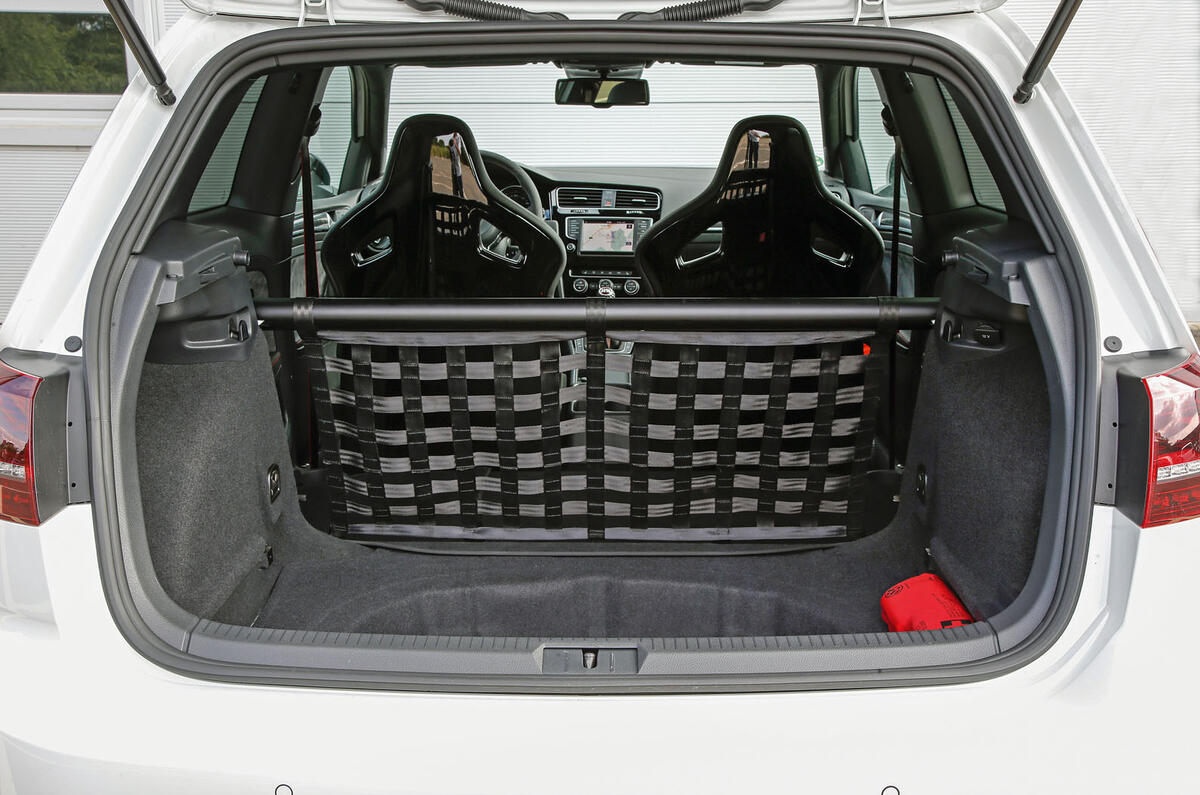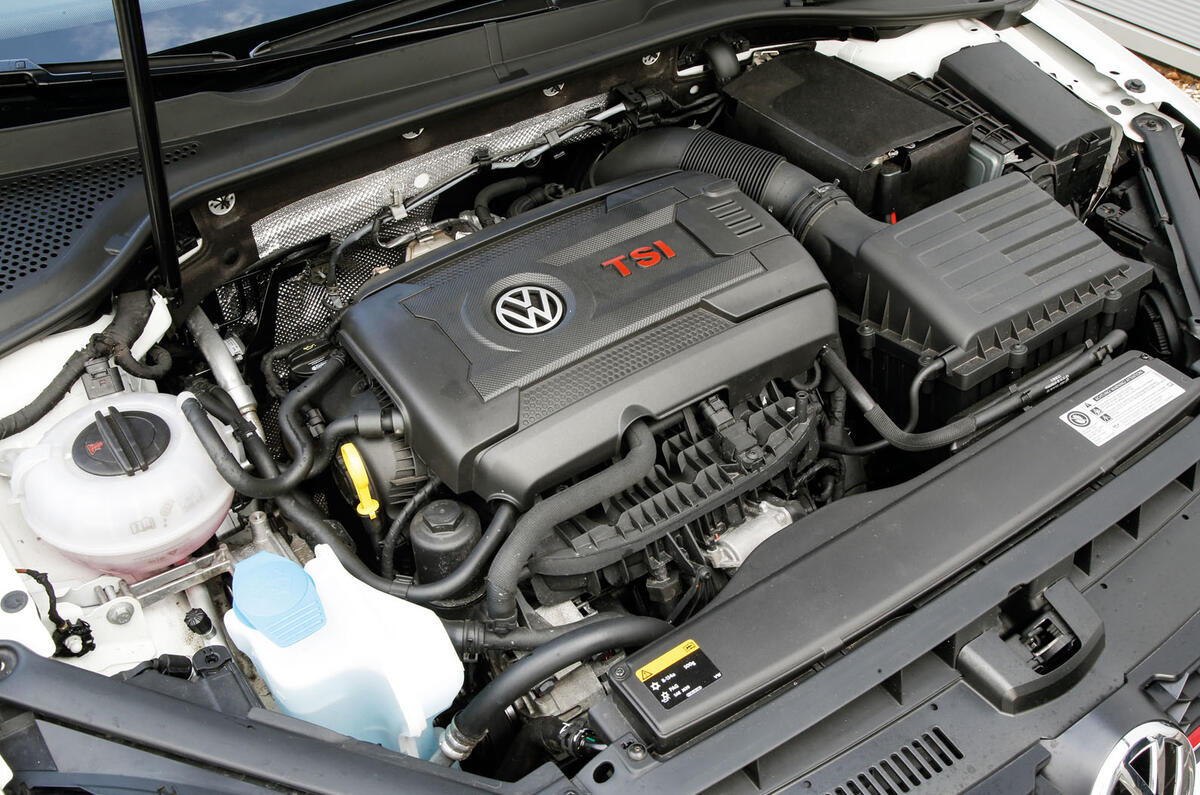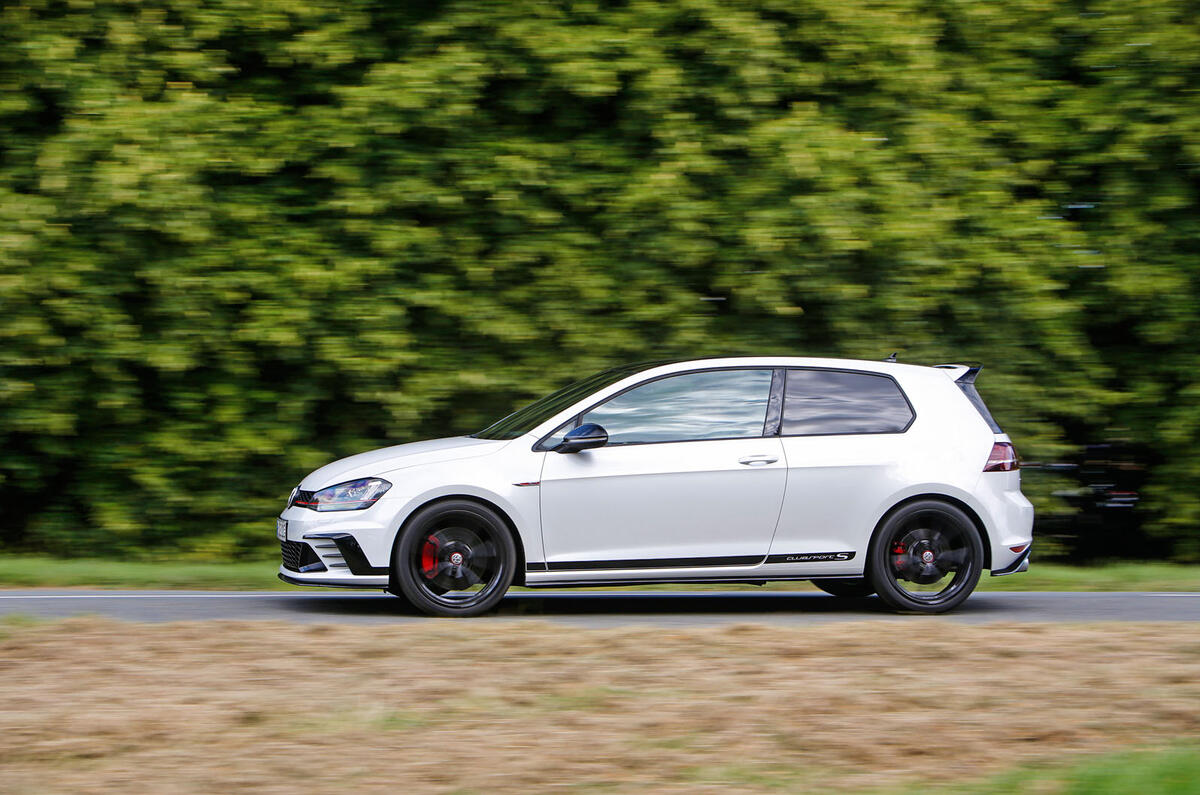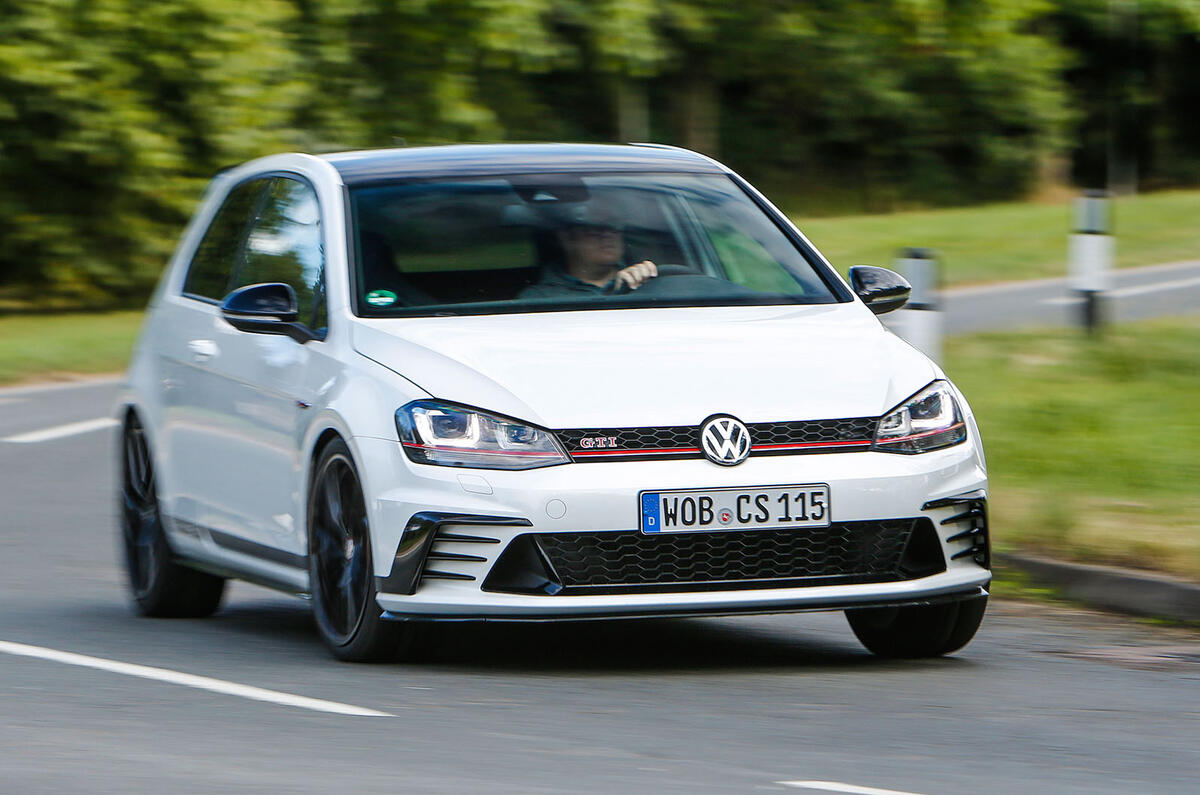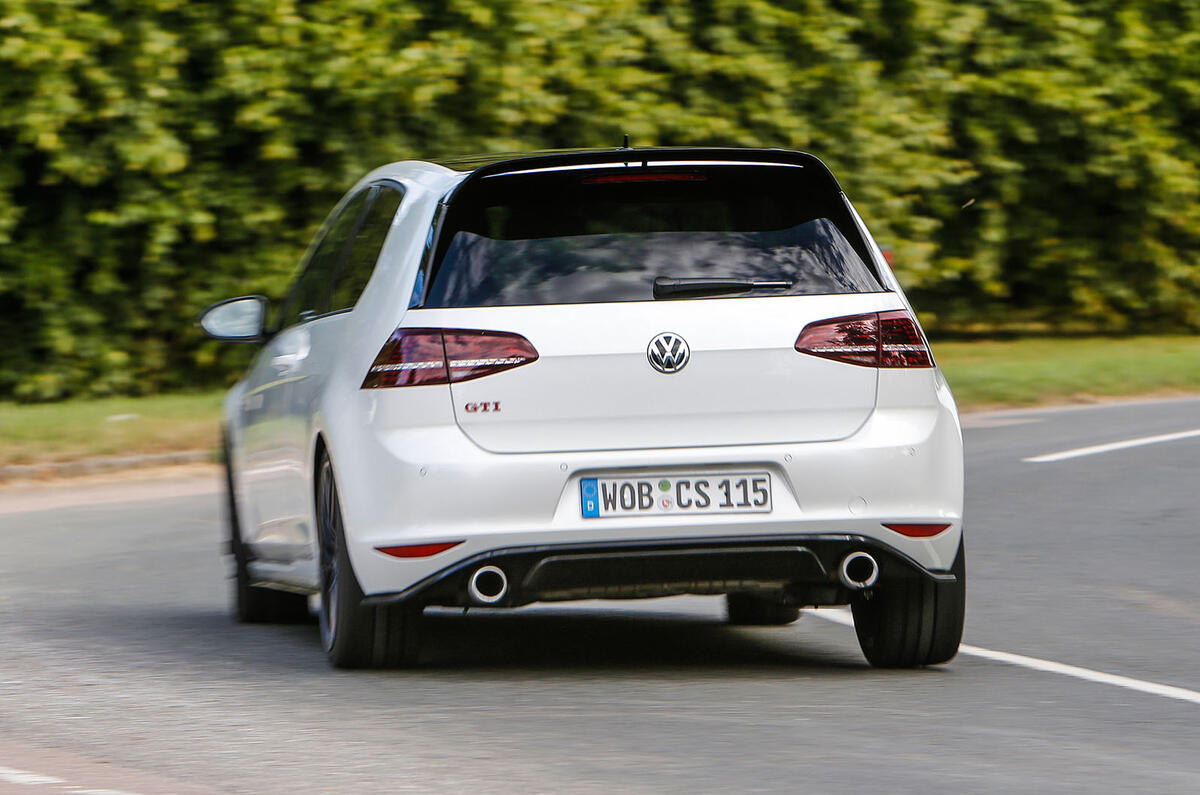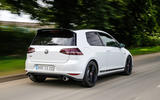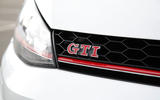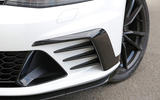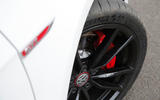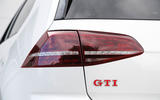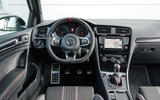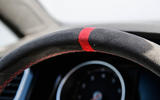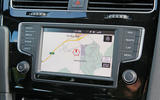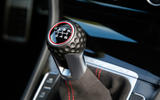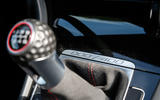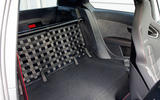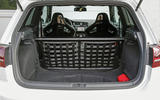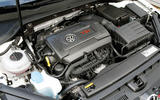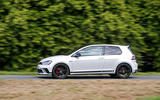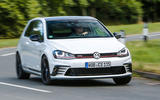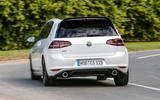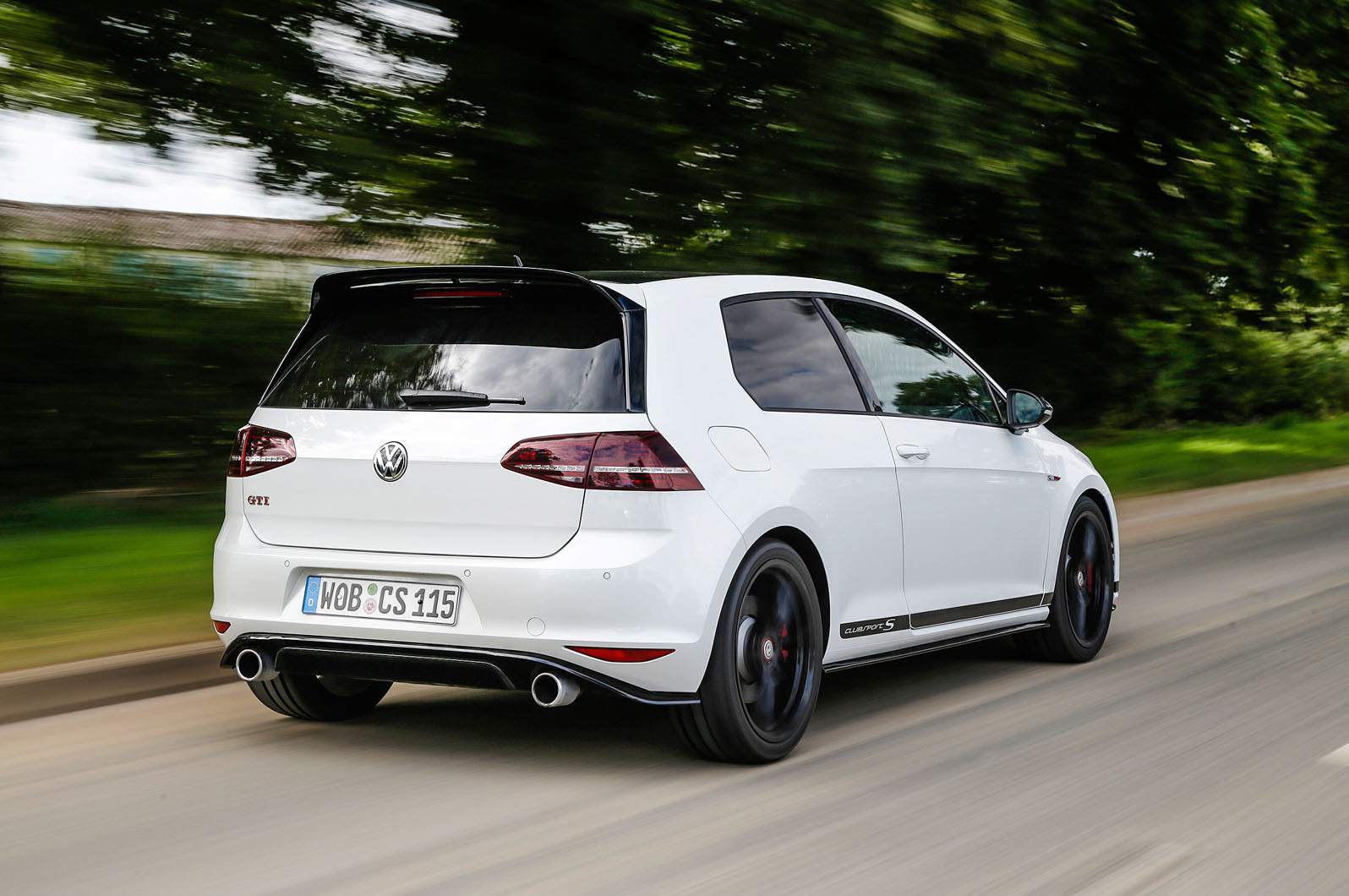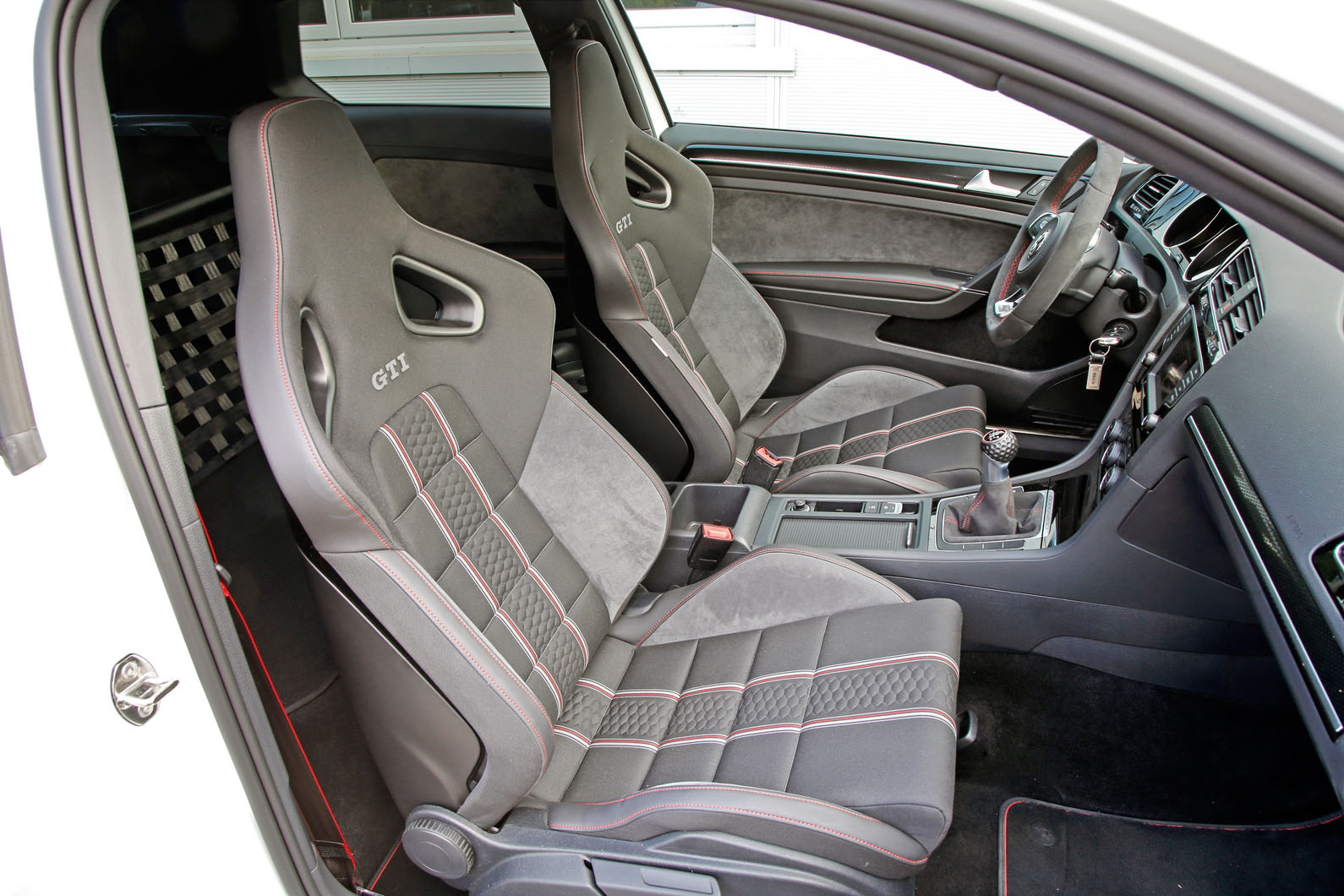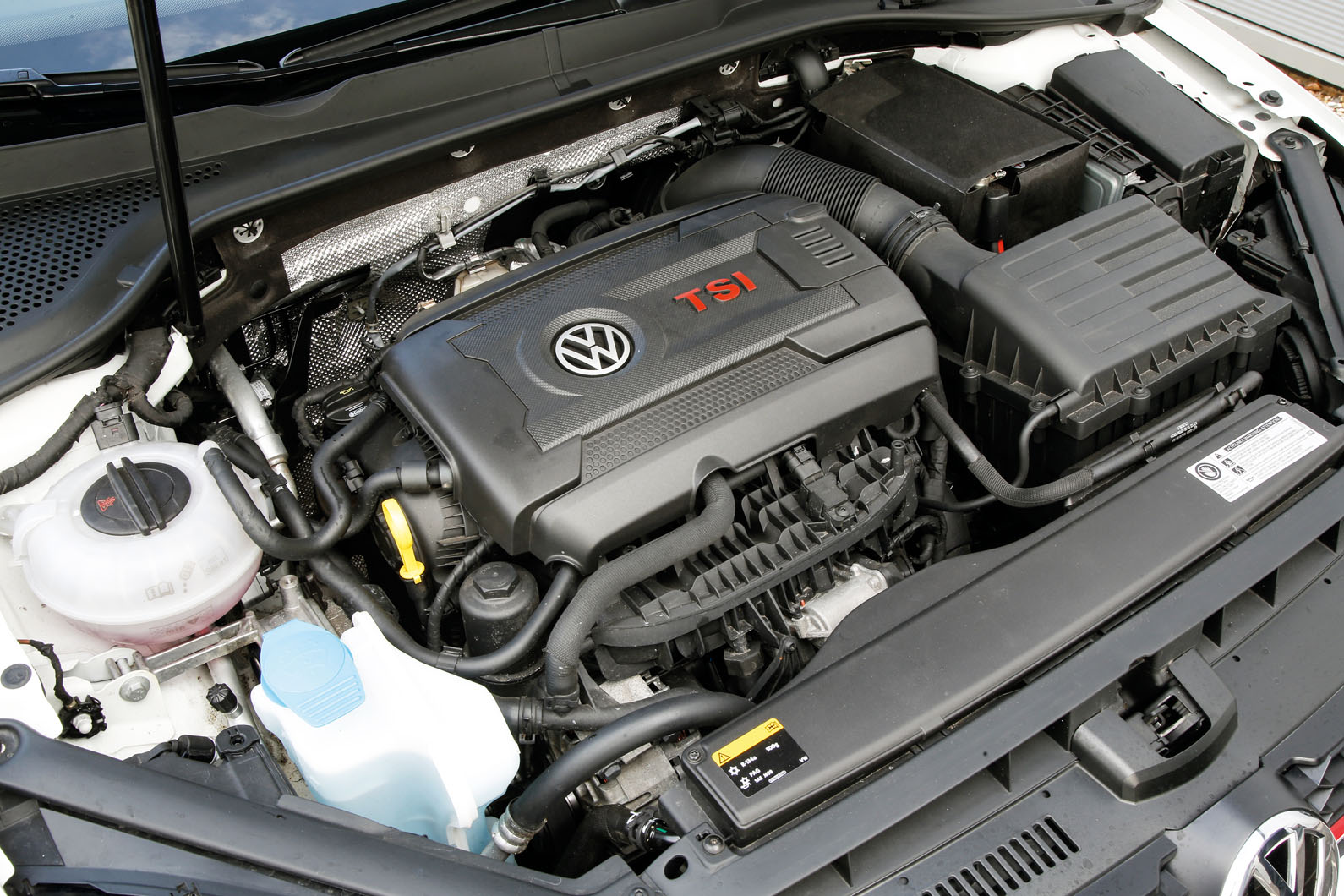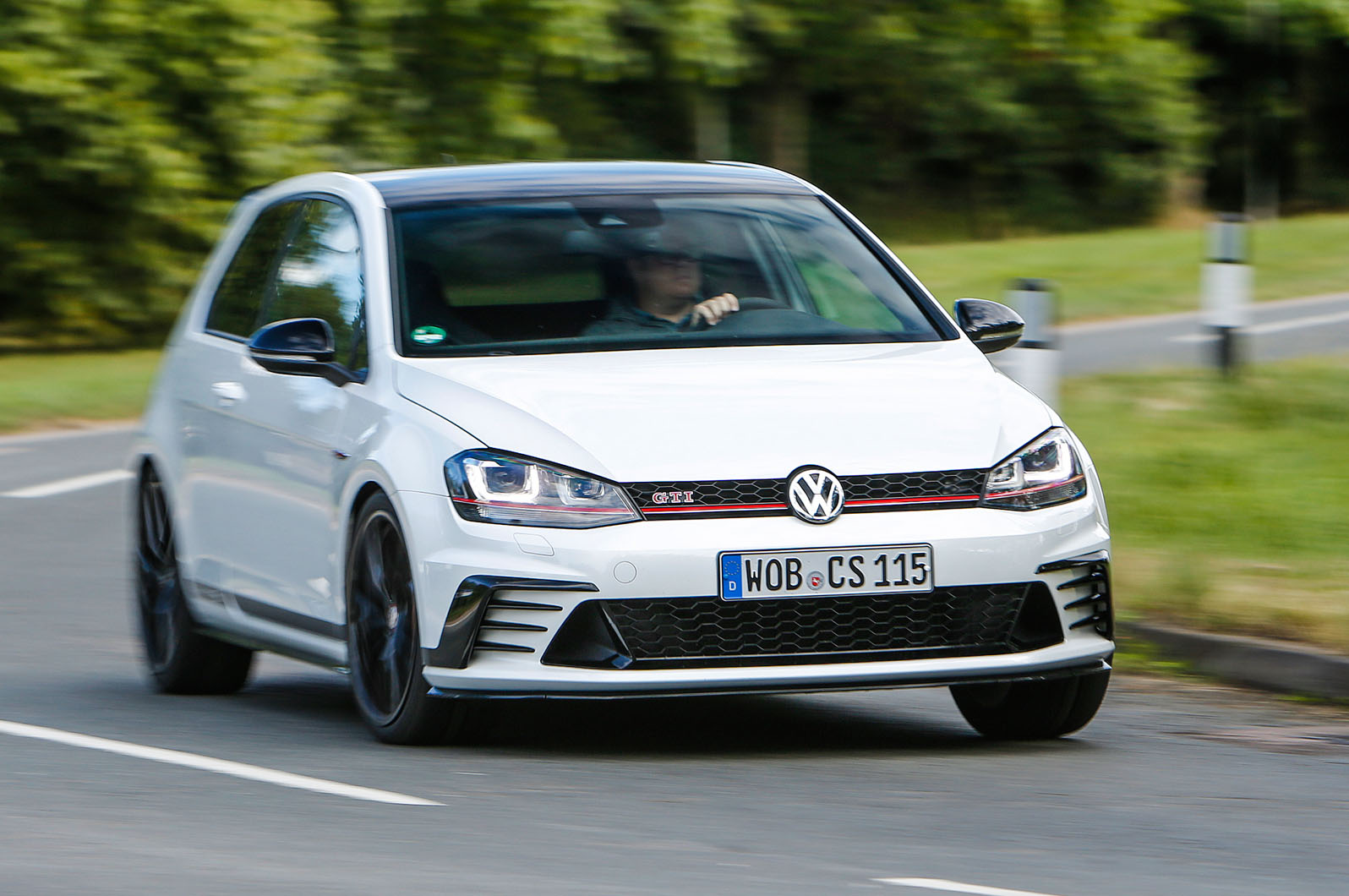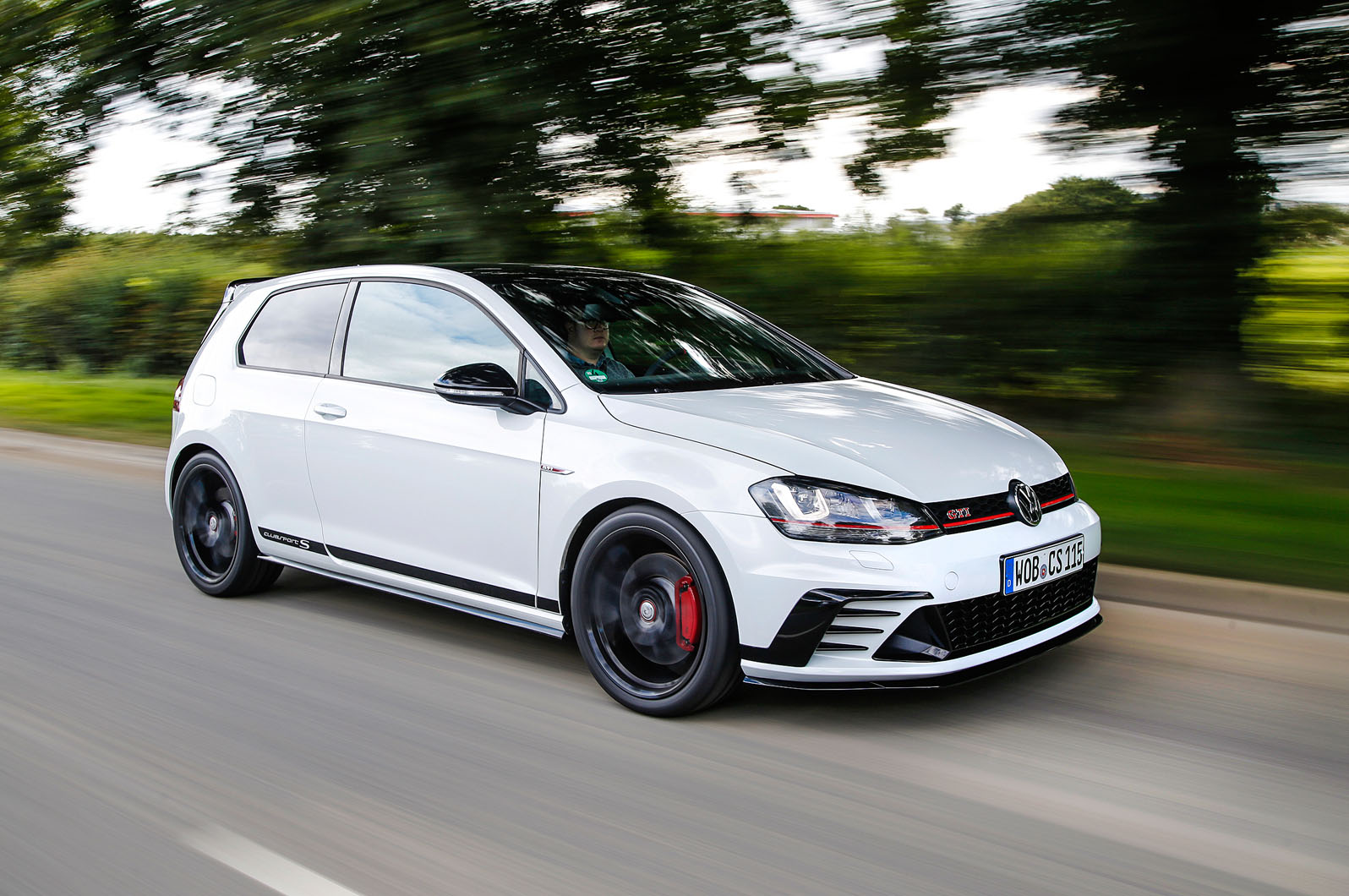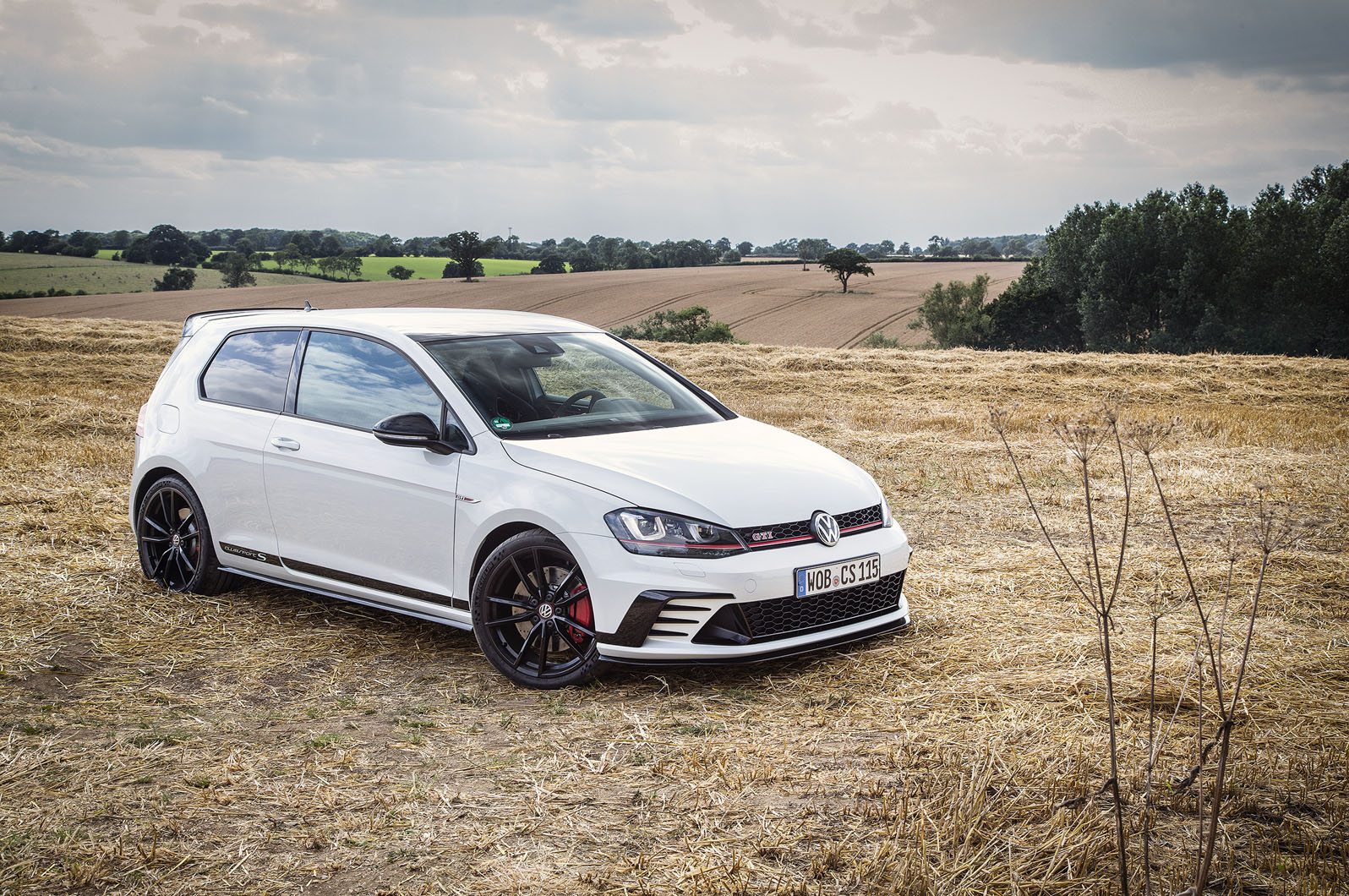The Golf GTI Clubsport S isn’t quite as pared back as the most ultra-hardcore hot hatchbacks we’ve seen over the years.
This is still a Golf GTI, remember, so it would never do if it felt ‘basic’ – and it certainly doesn’t.
But pause before sliding into the Recaro bucket to look behind it and you’ll see only the vestiges of the back seats and parcel shelf.
VW has made a gesture at replacing at least part of the function of the rear seatbacks with an anodised bar that bolts between the upper seatback anchorages and a retaining net that hangs underneath it, tied down to the boot floor, which should prevent anything you put in the boot from joining you in the front of the cabin under heavy braking.
But you couldn’t call the bar itself a rear strut brace (although it’s clearly supposed to look a bit like one), because it’s only fixed – and fixed quite loosely at that – with allen bolts.
Our test car had climate control added back onto its specification (a no-cost option), so it wasn’t as sparse or as light as it might have been. You get VW’s Discover Navigation infotainment system as standard, but you don’t get a centre armrest.
The Clubsport S gets the same Discover Navigation system that is fitted as standard to every Volkswagen Golf above entry-level S trim.
It comes with a 6.5in colour screen — but this isn’t it. If you want the Discover Pro system as fitted to our test car (8.0in screen, voice control, hard drive storage, DAB radio), it’s a £1325 upgrade.
On a more conventional top-of-the-range model, we might criticise Volkswagen for a lack of generosity there, but in the case of a pared-down model like this, the lighter system might be justifiable.
Whether you believe it belongs on an ultra-hardcore hot hatchback or not, the Discover Pro set-up is certainly very good. With supremely clear mapping and great usability, the navigation system is child’s play to use, particularly when it comes to setting up your preferences for things like view and auto-zoom.
Both systems get Volkswagen’s Car-Net Guide and Inform functionality, filtering online traffic information, news, weather and fuel prices through via your smartphone’s data connection.
Volkswagen has also removed the sensors and transceivers that usually run the adaptive cruise control and crash mitigation systems, so there are a few blanks on the steering wheel.
The part-Alcantara Recaro buckets, shared with the standard Clubsport, are excellent and give plenty of room at the controls.
The suede-rimmed steering wheel can be pulled close to your chest and is grippy and tactile. The pedals are well located, although there’s a little too much space between brake and accelerator for the easiest heel-and-toe gearchanges. But pedal positioning apart, the driving position is pretty much ideal.
The instruments are typically clear, with a lap timer available as part of the trip computer function – but still no analogue oil temperature gauge, which might have come in handy on a track day.



